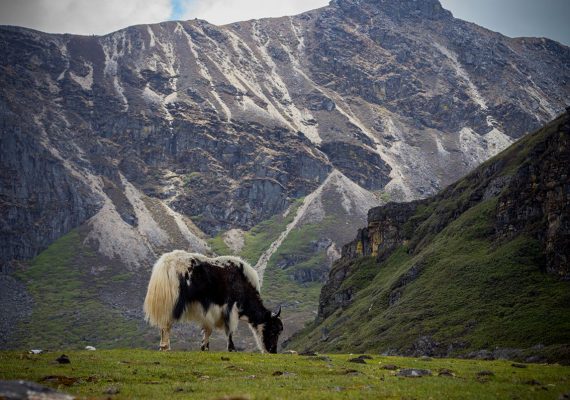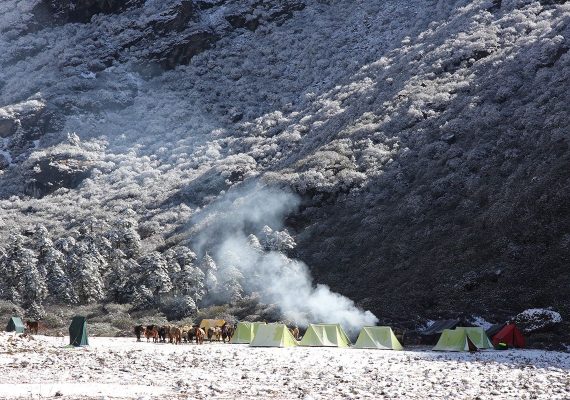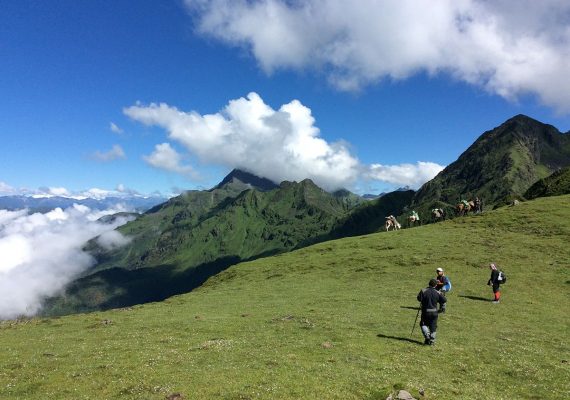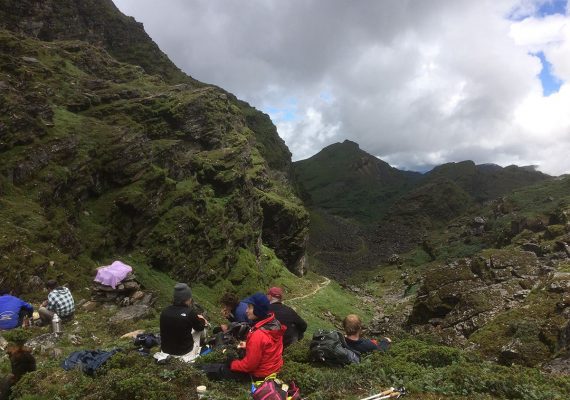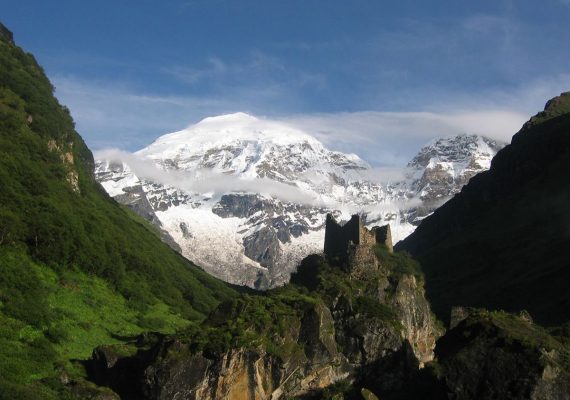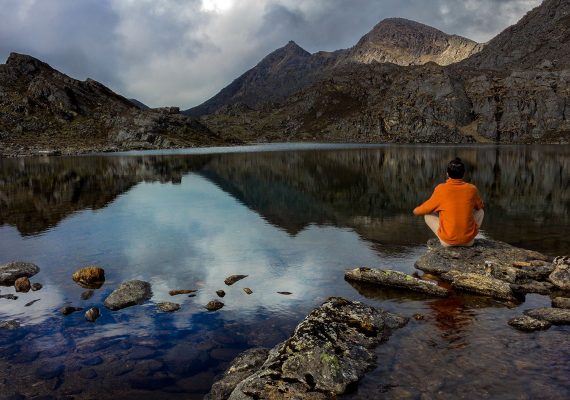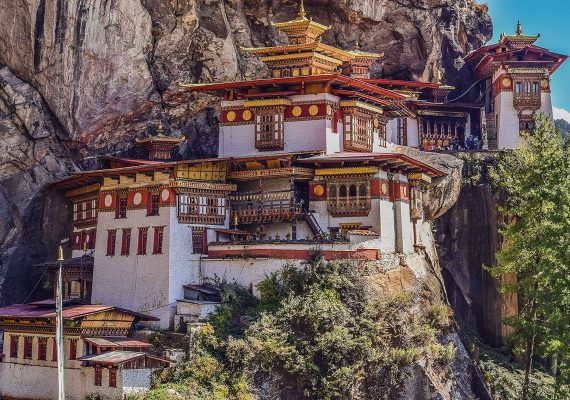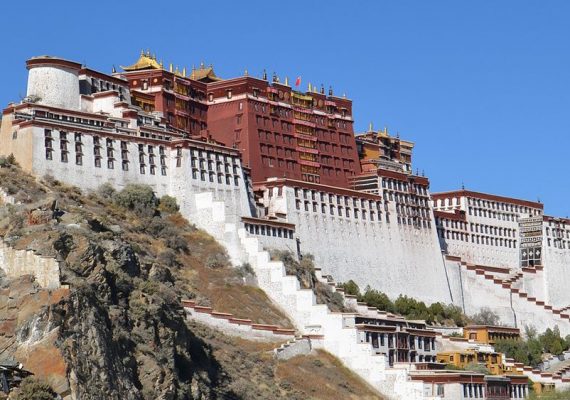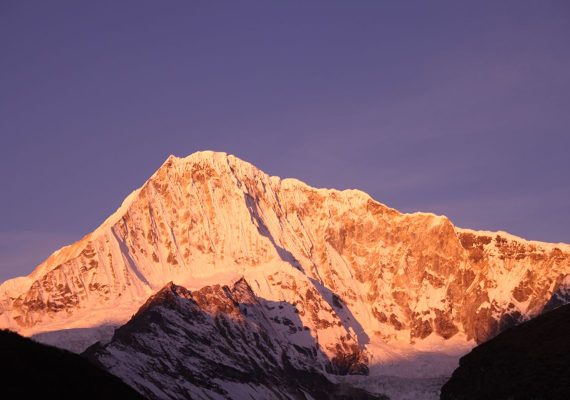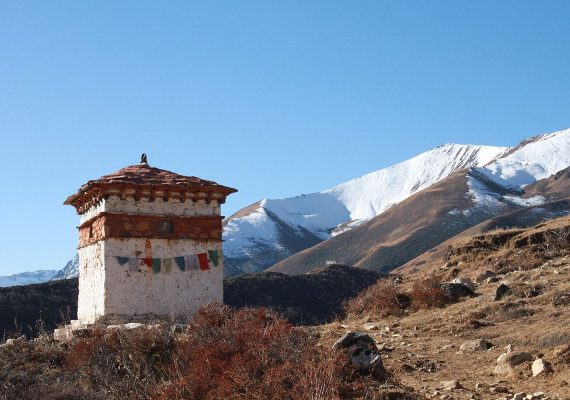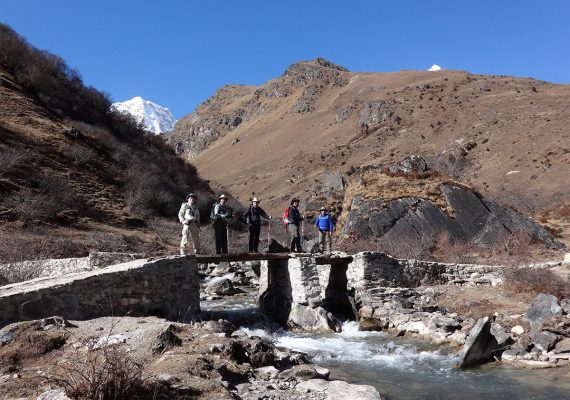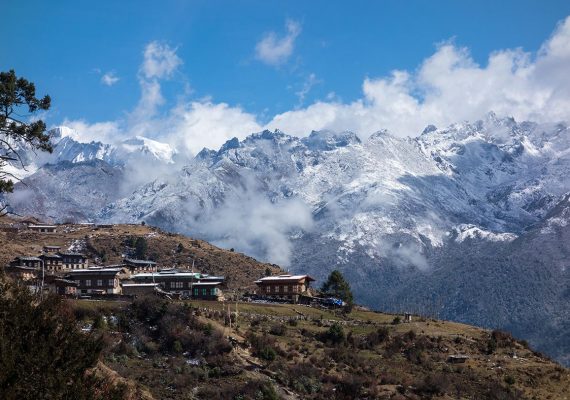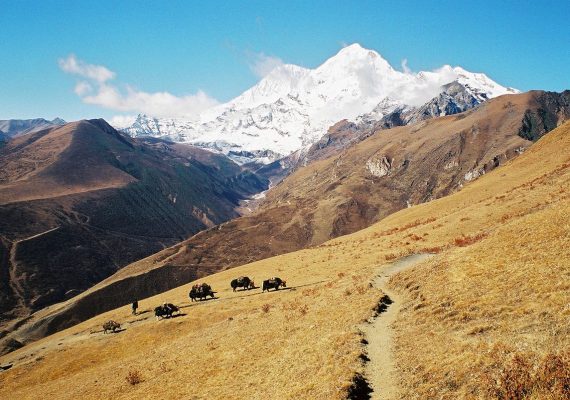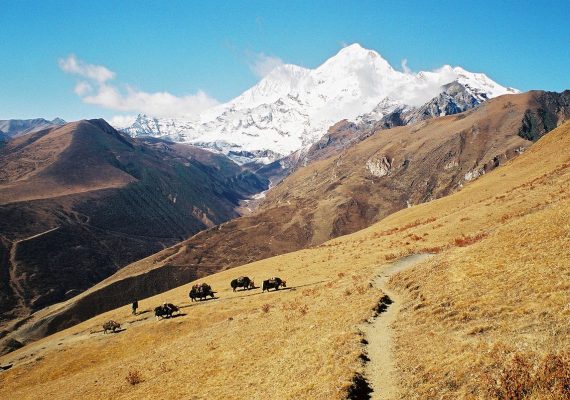Booking for : Laya – Gasa Trek
Inquiry for : Laya – Gasa Trek
Laya – Gasa Trek
Tour Details
We ascend through the river valley and beautiful pine and rhododendron forests. Sadly much of the forest has been cut to make way for electricity to be run to Jangothang and Lingshi – the sight of fallen trees is a reminder of the cost of progress…
Guidelines!
- A travel insurance policy that covers medical treatment is recommended for all tourists.
- Similarly, we recommend you to make sure that the insurance covers activities such as trekking, rafting etc. that you will be undertaking during your stay in Nepal
- Getting special vaccinations are not necessary when visiting Nepal.
- We still recommend that you consult with your physician regarding special immunizing against any tropical disease.
- We recommend that you undertake training programs to be physically fit if you plan to go high-altitude trekking or mountaineering when you’re visiting Nepal.
- Please make sure that salads and fruits are washed with purified water or peeled when eating out.
- Beware of food that has been kept out in the open for long.
- Always make sure that your water is clean by opting for boiled and then cooled water, treated water or sealed water from reputed brand.
- Always carry a bottle of water when trekking or venturing off away from the city/ town.
- Always carry and use mosquito repellant when in Terai region or during summers
- We provide a handy medical first aid kit while travelling anytime with us
Day 1,Arrive at Paro International Airport from Kathmandu
Paro is situated in a beautiful valley and is a fitting introduction to this charming kingdom. Your tour guide will meet you and take you to your hotel. In the afternoon we will visit the impressive Paro Rinpung Dzong, one of the finest examples of Bhutanese architecture. Afterwards if you wish to you can visit the 7th century Kyichu Lhakhang, a temple of historical significance and one of the most sacred shrines in Bhutan. Overnight in Paro.
Day 2,Acclimatise and hike to the "Tiger's Nest" the sacred Taktshang monastery
Take a day walk to the ‘Tiger's Nest’, the sacred Taktshang monastery which clings to the rock face 900 metres above the valley floor. Guru Rinpoche is said to have flown to the site riding on a tigress. He subsequently meditated here for three months. It is one of Bhutan’s most holy sites and draws pilgrims not only from Bhutan but also from neighbouring Buddhist countries. You can have lunch at the Taktshang cafeteria from where you get a spectacular view of the monastery. Overnight in Paro.
Please note: Originally it was a 6-hour walk to the first day’s camp at Shana, but now a farm road has been built and the journey can be done by vehicle in a couple of hours. In theory it is possible to drive to the end of the farm road and hike to the second day’s camp at Soi Thangthangkha all in one day, but this creates difficulties, as there is then not sufficient time to acclimatise. Walking along the farm road is unappealing; so instead we recommend a second acclimatisation hike at Chele La near Paro, climbing high during the day to aid acclimatisation, then return to Paro. The next morning drive to the camp at Shana and start the hike from there giving you more time to adjust to the altitude before you climb towards base camp at Jangothang. This is our recommended approach to the start of the trek..
Day 3,Acclimatise and hike to Gung Karpo La
Today you can do a second acclimatisation hike. First drive about an hour and a half to Chele La pass at about 3900 metres where you will have a splendid view of the Himalaya range, weather permitting. From the road you can walk up the incline around 2 hours towards Gung Karpo La (4300m), continuing above the tree line along the ridge that divides Paro and Haa valleys. Here if the day is clear you will see even more breathtaking views of the snowcapped mountains, including Mount Jomolhari and other further peaks such as Kanchenjunga. Walk down the hill through rhododendron and hemlock forest towards Kila Gompa, a nunnery inhabited by about 30 nuns who live a life of contemplation and seclusion, with daily prayer and spiritual practice. The community is one of the oldest of seven nunneries in Bhutan and was initially established in the early 9th century as a meditation site. The main temple houses ancient statues of Chenrezig and Guru Rinpoche, among others. After visiting the nunnery you can return to the car, which takes around 15 minutes.
This evening you can sort out your luggage for the trek. Anything you don’t need to carry with you will be driven safely to Thimphu to await your arrival. Overnight in Paro.
Day 4,(Laya - Gasa Trek Day 1): Shana to Soi Thangthangkha
Early in the morning drive about 2 hours through farm road to Shana, where you will start your trek. We ascend through the river valley and beautiful pine and rhododendron forests. Sadly much of the forest has been cut to make way for electricity to be run to Jangothang and Lingshi - the sight of fallen trees is a reminder of the cost of progress. We stop for lunch by the first bridge over the river and then continue to follow the right bank for a couple of hours until we reach a junction of two valleys, marked by a stupa. Here we turn north towards Mount Jomolhari, which can be seen from the top of the valley. Our camp will be at 3680 metres. (19 km, 8 to 9 hours). Overnight in camp
Day 5,(Laya - Gasa Trek Day 2): Soi Thangthangkha to Jangothang
The path passes a small, border army post where the valley begins to widen again and we leave the forest behind. Enjoy views of snow-capped peaks, high mountain ridges and yaks and yak herders. We will stop for lunch in a small hamlet where the family will welcome us. You can also stop to visit a small local school at Soe, before reaching Jangothang. From here it is not far to reach camp, which is in a beautiful grassy meadow beneath a ruined fortress at the base of Mount Jomolhari (4040 m). (19 km, 6 hours). Overnight in camp.
Day 6,(Laya - Gasa Trek Day 3): Rest day at Jomolhari Base Camp
An opportunity to explore the glacier, do some washing in the stream (icy cold!) or just take it easy. If you feel like going further afield the guide will discuss the options with you. Overnight in camp.
Day 7,(Laya - Gasa Trek Day 4): Jangothang to Lingshi
The trail climbs gradually and then more steeply to Nyeli La (4850 m). On the way you will be rewarded when you stop for breath with tremendous views toward Jomolhari and Jitchu Drake. If the weather is clear, Lingshi Dzong can be clearly seen as we descend into the Lingshi basin, and Tserim Kang with its glaciers can be seen to the north. Follow the ridge for a long way until you drop through the forests to our camp just outside Lingshi village beside a stone shelter at 3915 metres. (19 km, 6 to 7 hours). Overnight in camp.
Day 8,(Laya - Gasa Trek Day 5): Lingshi to Chebisa
This is one of the shortest trekking days. The walk starts off on a path along the hillside with views across the valley. After a few hours you will catch a splendid view of Tserim Kang, before descending to Gang Yul (‘village at the pass’), a picturesque village of about 150 people. From here it is only an hour or so on a path which runs along the hillside until we reach our camp at Chebisa (3910 m), where it is possible to visit some village houses and a waterfall just behind the village. (10 km, 5 hours). Overnight in camp.
Day 9,(Laya - Gasa Trek Day 6): Chebisa to Shomuthang
The trail climbs gradually at first, getting steeper and steeper through wild pastures where yaks graze. You may also catch sight of blue sheep and eagles. Eventually we cross Gobu La (4350 m). From here it is a short walk down through rhododendron forest to the stream where we will stop for lunch. The afternoon’s walk is through pine and rhododendron forest, descending to the river from where the path traverses the hillside before climbing steeply once more to reach Shomuthang (3985 m). Thecamp is near a tributary to the Mo Chu, which emerges below the Gasa Tsachu (Hot Spring). From here you can see the helipad, sometimes used if the passes get snowed in. (17 km, 7 hours).Overnight in camp.
Day 10,(Laya - Gasa Trek Day 7): Shomuthang to Robluthang
We start with a climb to Jhari La (4600 m) where we are rewarded with quite stunning views, then descend again through forest to Tsharithang, the valley where herds of takin can normallybe seen. Today’s scenery is absolutely breathtaking. Cross the river and clamber up the hillside for an hour or so to camp at Robluthang (4160 m). (18 km, 7 to 8 hours). Overnight in camp.
Day 11,(Laya - Gasa Trek Day 8): Robluthang to Limithang
Above camp the yak trail which is our path today can be seen, taking us through a hanging valley and past a yak herder’s hut after about two hours’ walk. From here we take the left side of the valley and soon the Shinge La comes into view. It is a tough climb to the pass, which marks the boundary of the Laya district (4870 m). From here the path descends rapidly through the valley to a huge bank of moraine on the edge of a lake, and behind the Kang Che Da (‘Great Tiger Mountain’) can be seen. We camp here in a meadow by the river at Limithang in the Laya district, where the locals will be seen wearing unique regional dress (4090 m). (19 km, 8 hours).Overnight in camp.
Day 12,(Laya - Gasa Trek Day 9): Limithang to Laya
The path goes downhill at first through a winding river valley with forest of spruce and juniper. We climb gradually from the river until we enter the eastern end of Laya village (3820 m). (10 km, 5 to 6 hours).Overnight in camp.
Day 13,(Laya - Gasa Trek Day 10): Laya to Tongchu Ja
The trail follows the river valley and there is a breathtaking view of vibrant rivers, feeder streams and waterfalls. At Tongchu Ja there is a open space near by the river where you will camp for the night. (3510 m, 16 km)
OR
Please note that the farm road is newly built and is still under construction so we don't know exactly how far it will have reached by the time you arrive from your trek. If there is time you can go as far as Gasa springs to camp tonight. Your car will come as far as possible to pick you up and you can then drive to Gasa (2900m). If you have time you can visit Gasa Dzong and the small town and then continue about 15 minutes drive to Gasa hot spring or tsachu for the night. The spring is believed to be effective in curing various ailments including aching joints, and many Bhutanese families visit every winter. There are four pools, with temperatures ranging from warm to hot.Overnight in camp.
Day 14,Drive to Punakha
After breakfast if you wish you can have a bath again at the hot spring and then drive past rolling hillsides with vistas of fields, villages and oak and pine forests to reach the old capital, Punakha, at 1250 metres. On the way you might like to hike an hour or so up to Khamsum Yuelley Namgyel Chorten, high on the hill across the other side of the valley. The temple is 30 metres tall and is dedicated to the fifth King. From the top you will see a beautiful view of the valley and surrounding villages.Overnight in Punakha.
Day 15,Sightseeing in Punakha and drive back to Thimpu
This morning you can visit the imposing Punakha Dzong, “Palace of Great Happiness”. Built in 1637, it is strategically placed at the confluence of two rivers, the Po Chu and the Mo Chu. Then return to Thimphu over the Dochu La pass at 3050 metres. Later we may drive up to the Radio Tower (offering splendid views of the city from a hilltop festooned with prayer flags), and visit the Takin Reserve showcasing the unique national animal, the Takin. Discuss with your guide if there are any other sights you would like to see.Overnight in Thimphu.
Day 16,International Departure
Early in the morning your guide will accompany you to the airport to see you off onto your flight and wish you Tashi Delek (goodbye and good luck).
Recommended Tour Packages
